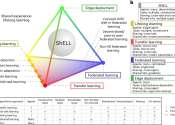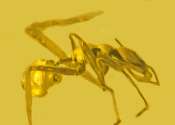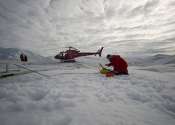With a global reach of over 10 million monthly readers and featuring dedicated websites for science (Phys.org), technology (Tech Xplore) and medical research (Medical Xpress), the Science X network is one of the largest online communities for science-minded people. Science X publishes over 200 quality articles every day, offering the most comprehensive coverage of sci-tech developments worldwide.
__________________________________________________________
LAST UPDATE:
MARCH 23, 2024
Prestigious journals make it hard for scientists who don't speak English to get published, study finds

We reviewed the policies of 736 journals in the biological sciences and discovered the great majority are making only minimal efforts to overcome language barriers in academic publishing. Our research is published in Proceedings of the Royal Society B.
- Allowing papers to be published in more than one language at the same time would resolve the dilemma many non-native English speaking scholars face about communicating locally or globally. However, only 7% of the journals we surveyed allowed this possibility. (A further 11% will allow multilingual versions of an abstract alone.)
- Another possibility would be to implement machine translation tools to make versions of an article available in multiple languages on a journal's website. There has been recent progress in this area, but only 11% of journals we surveyed have put it into practice.
To ensure published research learns from the scientific contributions of scholars from around the globe, journals should explicitly allow or encourage non-English literature to be cited. Only one tenth of journals mention this in author guidelines.
- More than half the journals we surveyed refer authors to some kind of editing services; only 1% offer the service free of charge to authors.
- The cost of editing may impose a considerable financial burden on scholars in lower-income countries.
Drivers of inclusivity
- The first is impact factor, a measure commonly taken to represent the prestige of a journal. We found journals with higher impact factors tend to adopt less-inclusive policies, possibly because they mostly target English-proficient authors and readers.
- The second influence is ownership by a scientific society. Journals owned by scientific societies tended to adopt more inclusive policies. They have also taken the lead in the movement to publish multilingual content.
The apparent lack of influence of linguistically diverse board members is a puzzle. Perhaps editors who have experienced language barriers in their own professional life do not advocate for non-native English speaking authors. Or perhaps editorial boards have less power to define editorial policies than we might expect.
Language barriers
In our study, we looked at a number of linguistically inclusive policies, but there are plenty of other things journals can do to help scientists from non-English speaking backgrounds. These range from using artificial intelligence tools to the re-negotiation of copyrights to authorize the publication of translations elsewhere.
More information: Henry Arenas-Castro et al, Academic publishing requires linguistically inclusive policies, Proceedings of the Royal Society B: Biological Sciences (2024). DOI: 10.1098/rspb.2023.2840
Journal information: Proceedings of the Royal Society B
Provided by The Conversation
This article is republished from The Conversation under a Creative Commons license. Read the original article.

Scientists develop ultra-thin semiconductor fibers that turn fabrics into wearable electronics
Scientists from NTU Singapore have developed ultra-thin semiconductor fibers that can be woven into fabrics, turning them
into smart wearable electronics. Their work has been published ...
MATERIALS SCIENCE
11 HOURS AGO
0
24

Unintentional generation of PCBs may be producing more of the chemicals than before ban
A trio of researchers at Chemistry Matters Inc., in Canada, has found evidence suggesting that more polychlorinated biphenyls (PCBs) are being generated today than before they were banned.

Top computer scientists say the future of artificial intelligence is similar to that of Star Trek
Leading computer scientists from around the world have shared their vision for the future of artificial intelligence—and it resembles the capabilities of Star Trek character "The Borg."
COMPUTER SCIENCES
MAR 22, 2024
2
360

A method to enhance the planning of missions completed by multiple UAVs
Unmanned aerial vehicles (UAVs), also known as drones, have already proved to be valuable tools for tackling a wide range of real-world problems, ranging from the monitoring of natural environments and agricultural plots ...

Research uncovers a rare resin fossil find: A spider that aspires to be an ant
Arachnophobia can make humans flee at the sight of a brown recluse, black widow or even a daddy long legs, but animal predators of spiders know no such fear.
ECOLOGY
MAR 22, 2024
0
111

Study reports enormous ice loss from Greenland glacier
Ground-based measuring devices and aircraft radar operated in the far northeast of Greenland show how much ice the 79° N-Glacier is losing. According to measurements conducted by the Alfred Wegener Institute, the thickness ...
EARTH SCIENCES
MAR 22, 2024
0
945
.jpg)




No comments:
Post a Comment